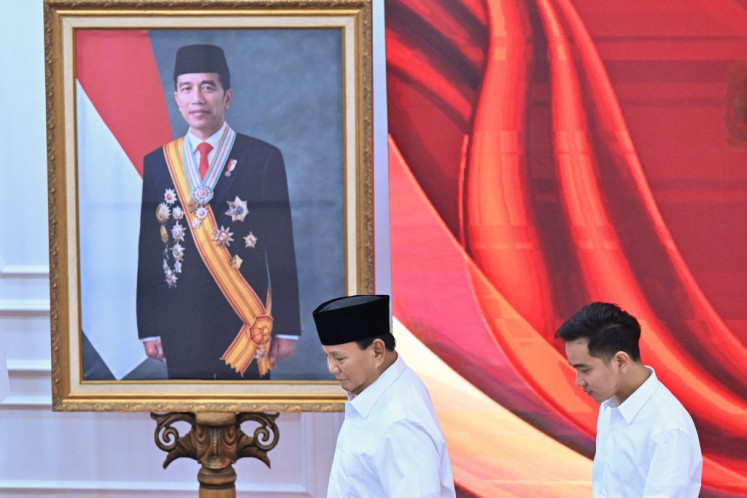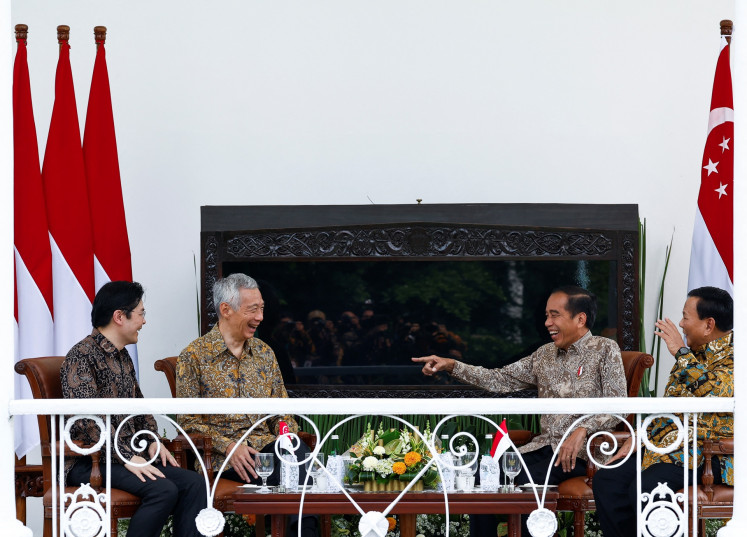BRI profits slumps as bad credit rises in 2019
State-owned lender Bank Rakyat Indonesia’s (BRI) profit growth slumped to its lowest level in two years.
Change Size
 BRI board of directors poses for a photo on Jan. 24 before presenting its 2019 performance report in Jakarta (Riska Rahman/Riska Rahman)
BRI board of directors poses for a photo on Jan. 24 before presenting its 2019 performance report in Jakarta (Riska Rahman/Riska Rahman)
S
tate-owned Bank Rakyat Indonesia’s (BRI) profit growth slumped to its lowest level in two years as it recorded a significant rise in bad credit last year.
The publicly listed bank’s net profit only grew 6.15 percent year-on-year (yoy) to Rp 34.14 trillion (US$2.5 billion) in 2019, the slowest growth the bank has experienced since 2017.
President director Sunarso admitted that last year posed a challenge for the bank as many performance indicators, such as loan growth and net interest income (NII), slumped as well.
Last year, the micro business-focused bank managed to disburse Rp 908.88 trillion in loans, up 8.44 percent yoy. The growth was much lower than 2018’s loan growth of 14 percent yoy.
“However, this figure was still much better than the national banking industry’s loan growth of 6.08 percent,” Sunarso said during a press conference on Thursday in Jakarta.
The lender’s net interest income, meanwhile, also slumped last year as it only grew 5.2 percent yoy to Rp 81.7 trillion. The growth was slower than 2018’s figure of 6.35 percent yoy.
Finance director Haru Koesmahargyo also blamed the slowing profit growth on its rising bad credit ratio as its non-performing loans (NPL) reached 2.8 percent last year from 2.27 percent in 2018.
He said the segment that drove BRI’s bad credit ratio higher last year was corporate loans, the ratio of which rose to 8 percent in 2019 from 5 percent in 2018.
“The rising NPL ratio is making the yield we receive from certain loans decrease, so we have to increase our loan loss provision to cover the liquidity risk,” he said.
Sunarso said one of the companies that posed risks to the bank was textile manufacturer Duniatex Group, which owed the state-owned company around Rp 1.4 trillion in 2019.
“However, we’ve set aside 100 percent of Duniatex's loan amount as provision,” he said, adding that the bank was currently in talks with Duniatex to restructure its debt.









